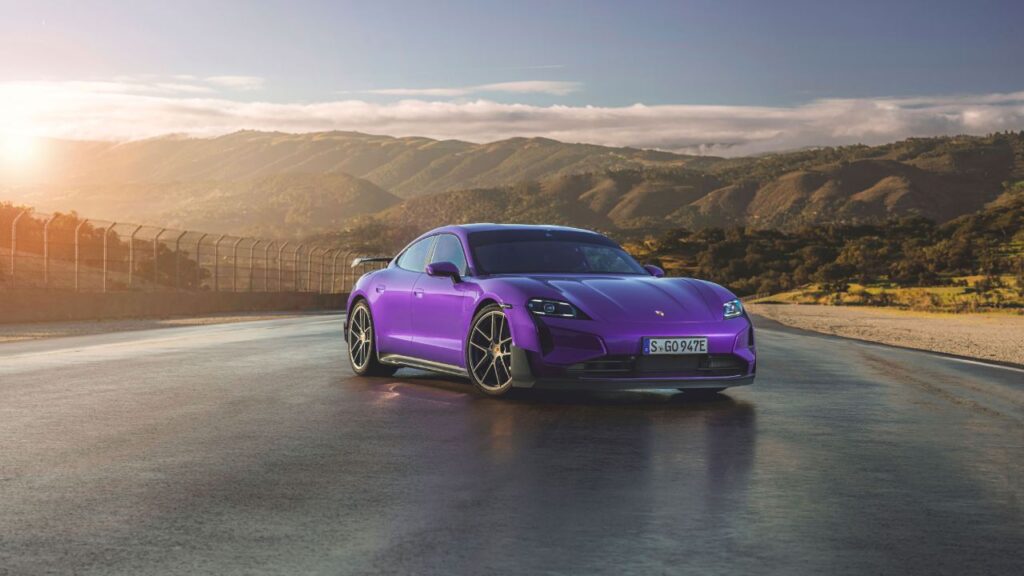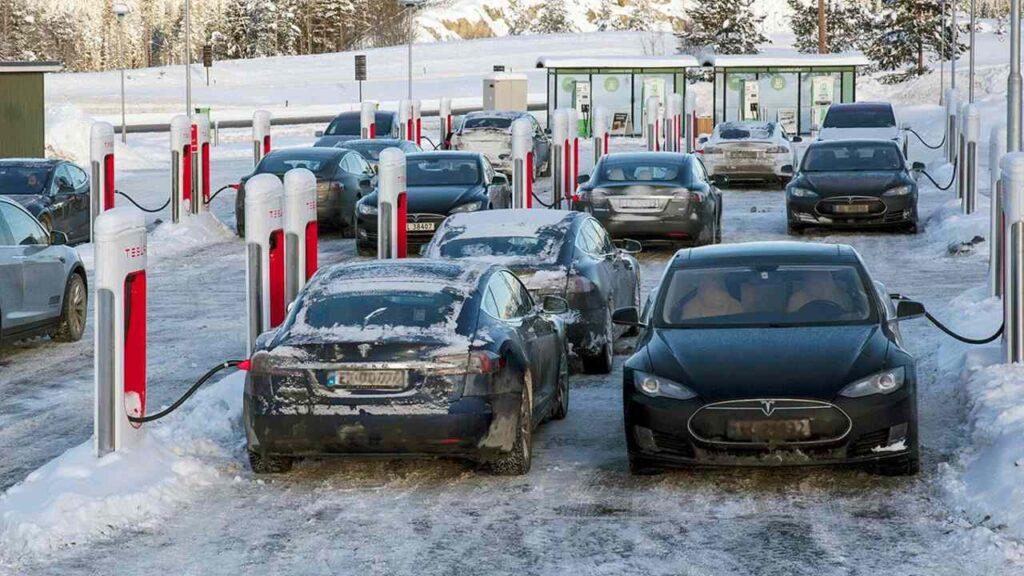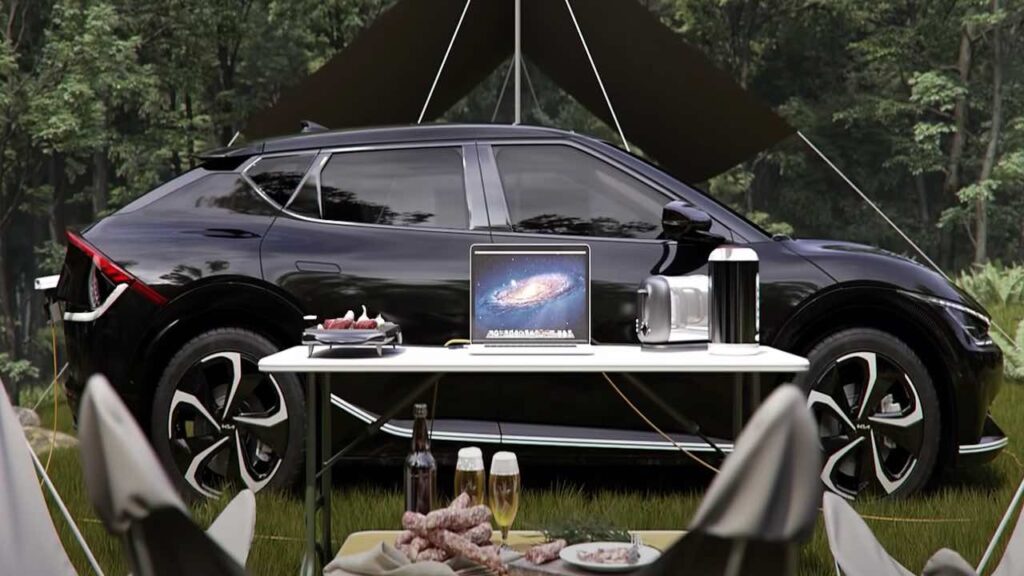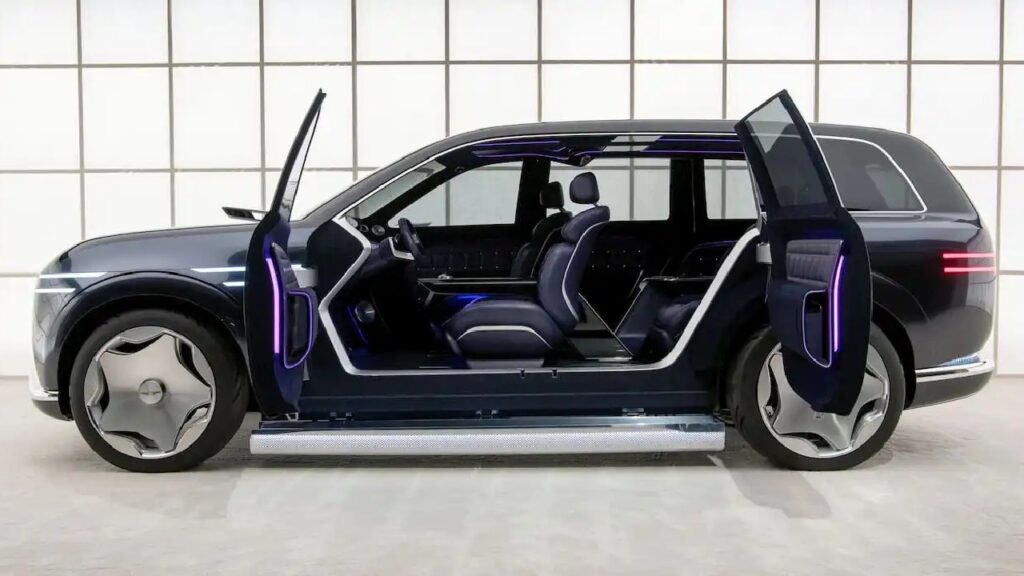Taycan Turbo GT Becomes The Most Powerful Porsche Ever
The Porsche Taycan Turbo GT with Weissach package was crowned the fastest electric series-production car at the Weathertech Raceway Laguna Seca, in California, USA. The Porsche Taycan Turbo GT shattered all records at this Laguna Seca track to post an unprecedented 1:27:87 min lap time. Theoretically, the Taycan Turbo GT, with the Weissach Package, boasts a jaw-dropping 2.2-second sprint time to reach 100 km/h (62 mph) from a standstill. With a generous use of carbon fibre elements, the Taycan Turbo GT weighs a considerable 75 kg less than the Taycan Turbo S. With the track-focused Weissach Package, another 70 kg is shaved off by removing the rear seats, rear speakers and one of two charge ports. You might also like: Porsche Macan EV Specs and Interior Revealed – Gets AR HUD Porsche Taycan Turbo GT – Specs The specs sheet of the Porsche Taycan Turbo GT highlights its engineering prowess. In the absolute top settings with Launch Control and Weissach Package, the total power and torque outputs stand at a spine-chilling 1,093 hp (815 kW) and 1,340 Nm for 2 seconds. This is 74 hp (55 kW) more than the tri-motor Tesla Model S Plaid. Without the Weissach Package, this number drops to 1,019 hp (760 kW) (available for 10 seconds). But in the regular configuration, it generates a decent 778 hp (580 kW). With the Weissach Package, the 0-100 km/h acceleration takes 2.2 seconds, making it the fastest-accelerating Porsche to ever hit public roads. Even without this package, the 0-100 km/h (62 mph) sprint comes up in just 2.3 seconds. The top speed is an exhilarating 305 km/h (190 mph). Even though it seems blasphemous to discuss range figures for a track monster like the Taycan Turbo GT, we would still like to highlight that it offers a range of 555 km on a single charge on a WLTP cycle. Specs Porsche Taycan Turbo GT Power (w/ Launch Control and Weissach Pack) 1,093 hp (815 kW) Power (w/ just Launch Control) 1,019 hp (760 kW) Power (normal settings) 778 hp (580 kW) Acc. (0-100 km/h / 62 mph w/ Weissach Pack) 2.2 seconds Acc. (0-100 km/h / 62 mph w/o Weissach Pack) 2.3 seconds Top Speed 305 km/h (190 mph) Specs You might also like: Rivian R3 Reminds Us Of Hyundai Ioniq 5, R2 Also Spotted Testing Interior and Features Once launched, people will exclusively buy it for its performance. Still, it makes sense to see what the cabin offers. There is black leather upholstery, lightweight full bucket seats, Front Adaptive Sports Seats Plus (with electric 18-way adjustment and memory package), Turbo GT logo embroidered on the front headrests, Steering wheel covered in black Race-Tex with 12 o’clock marking and BOSE Surround Sound System. Most other components are not present in the Weissach Package to save weight. Lightweight Construction and Chassis The main focus to achieve exquisite acceleration is on reducing the overall weight of this monster. As a result, carbon fibre finds use in B-pillars, bucket seats made of CFRP, upper shells on door mirrors, luggage compartment, and the removal of electric soft-closing tailgate function. Other bits to maximize performance include Porsche Active Ride suspension with GT-specific tuning, 21-inch lightweight forged wheels, Porsche Ceramic Composite Brake (PCCB), adaptive spoiler, air deflector elements on the underbody and a new front diffuser and more. You might also like: Hyundai IONIQ 5 N Starts At $66,100 – How Does It Compare To The Rivals? Learn Electric Cars Says Porsche has been able to achieve something truly remarkable with the Taycan Turbo GT. It signifies the zenith of what engineering can develop. Porsche has always been known for pushing the envelope and creating some of the most driving-focused automobiles on the planet. With the electrification of the automobile industry, the German performance car maker wants to ensure that it doesn’t lose its DNA. Let us see how well the potential customers embrace this electric track-decimating monster.










